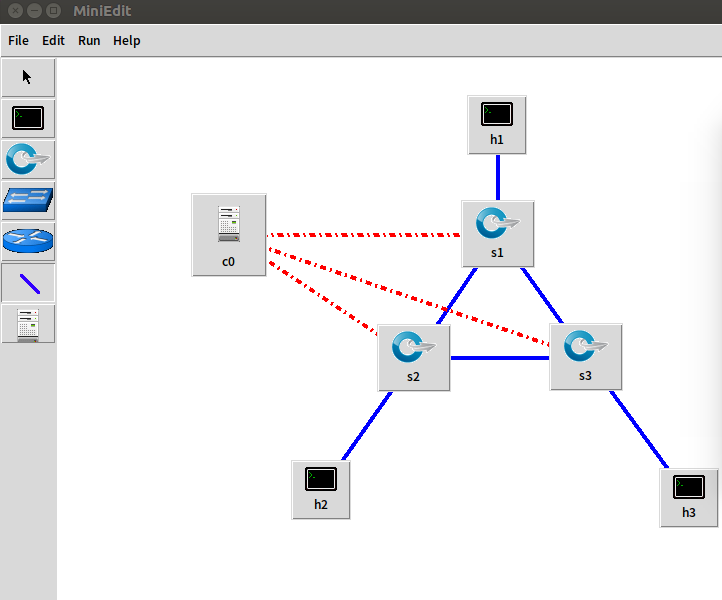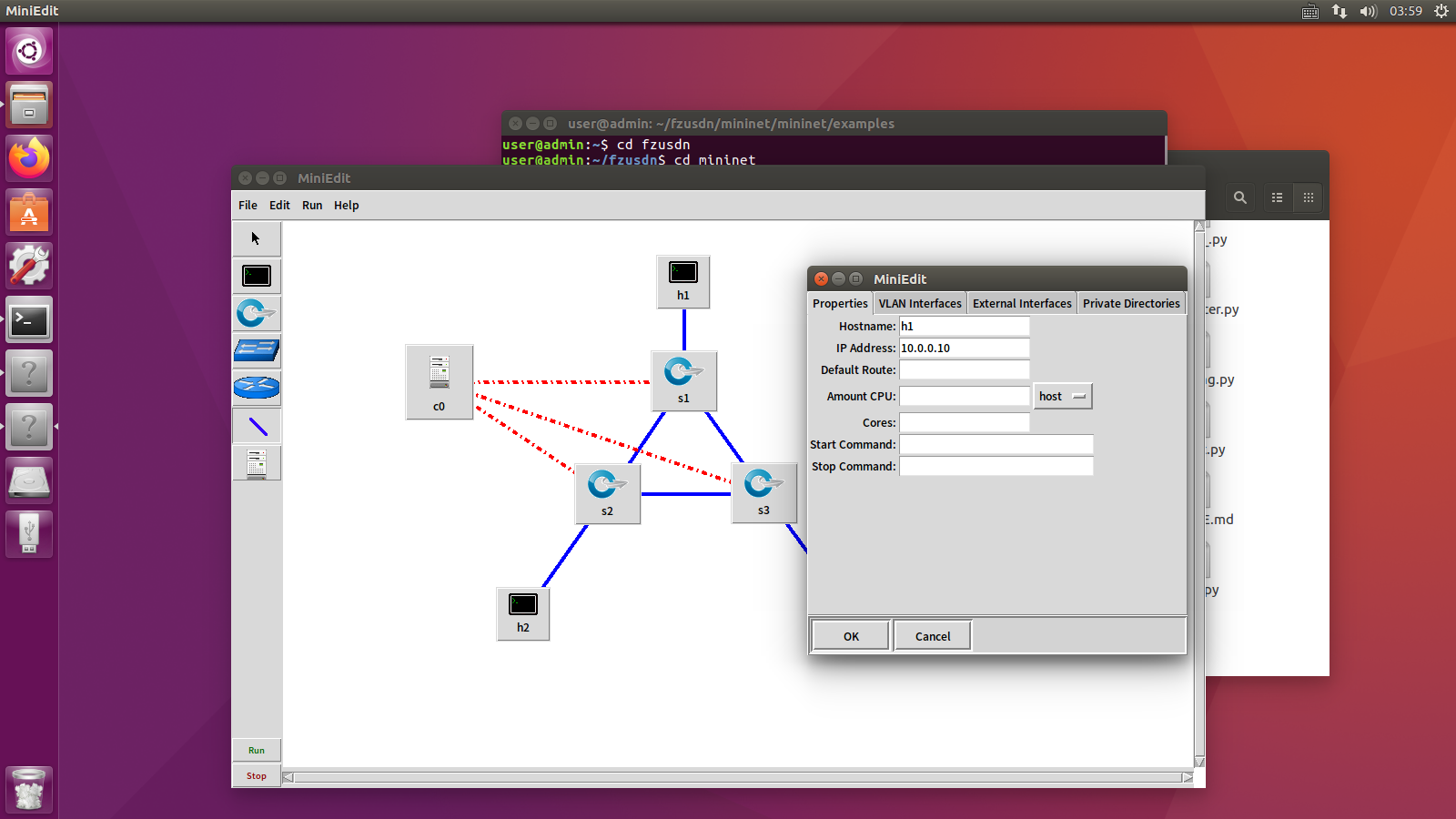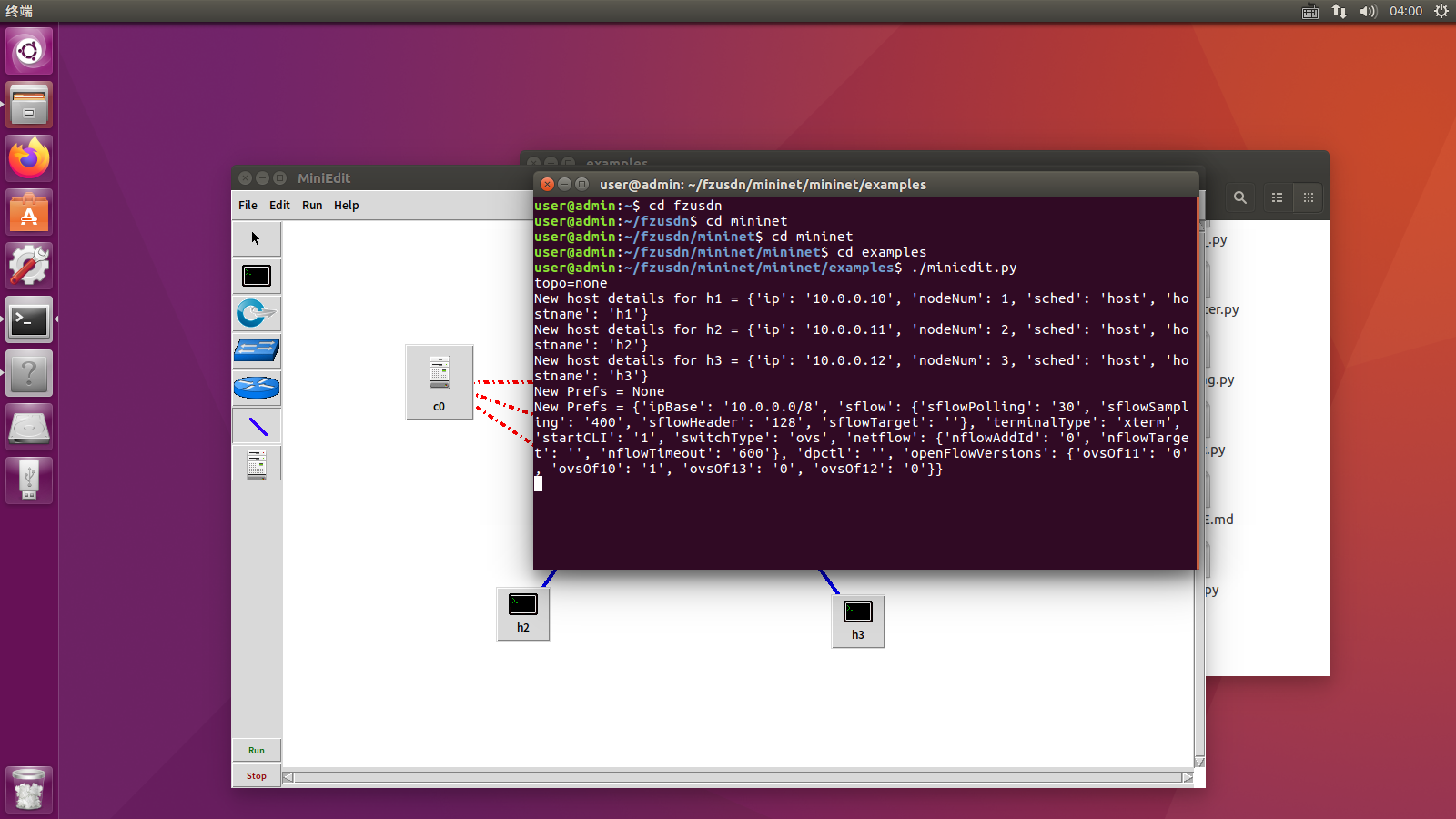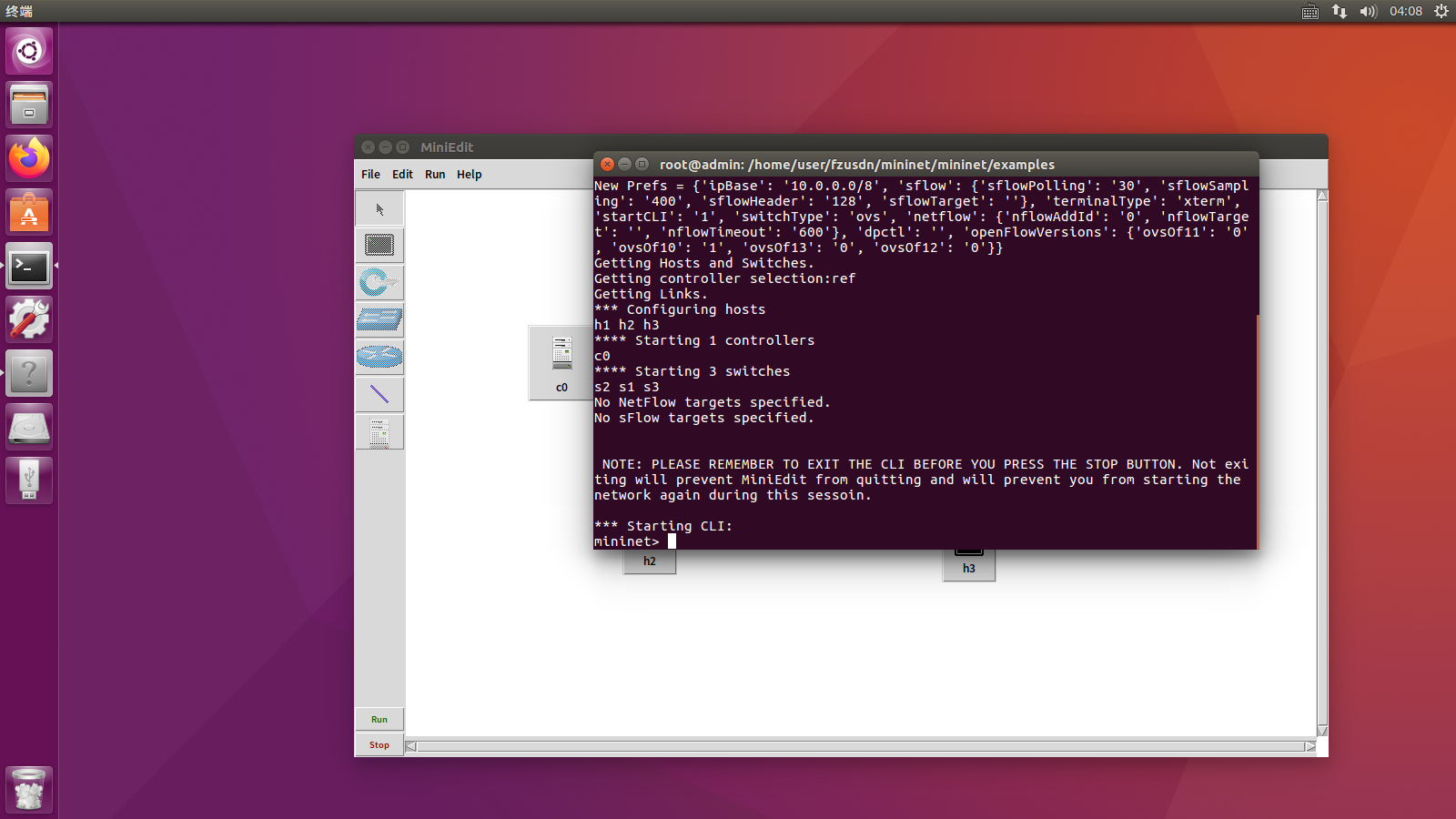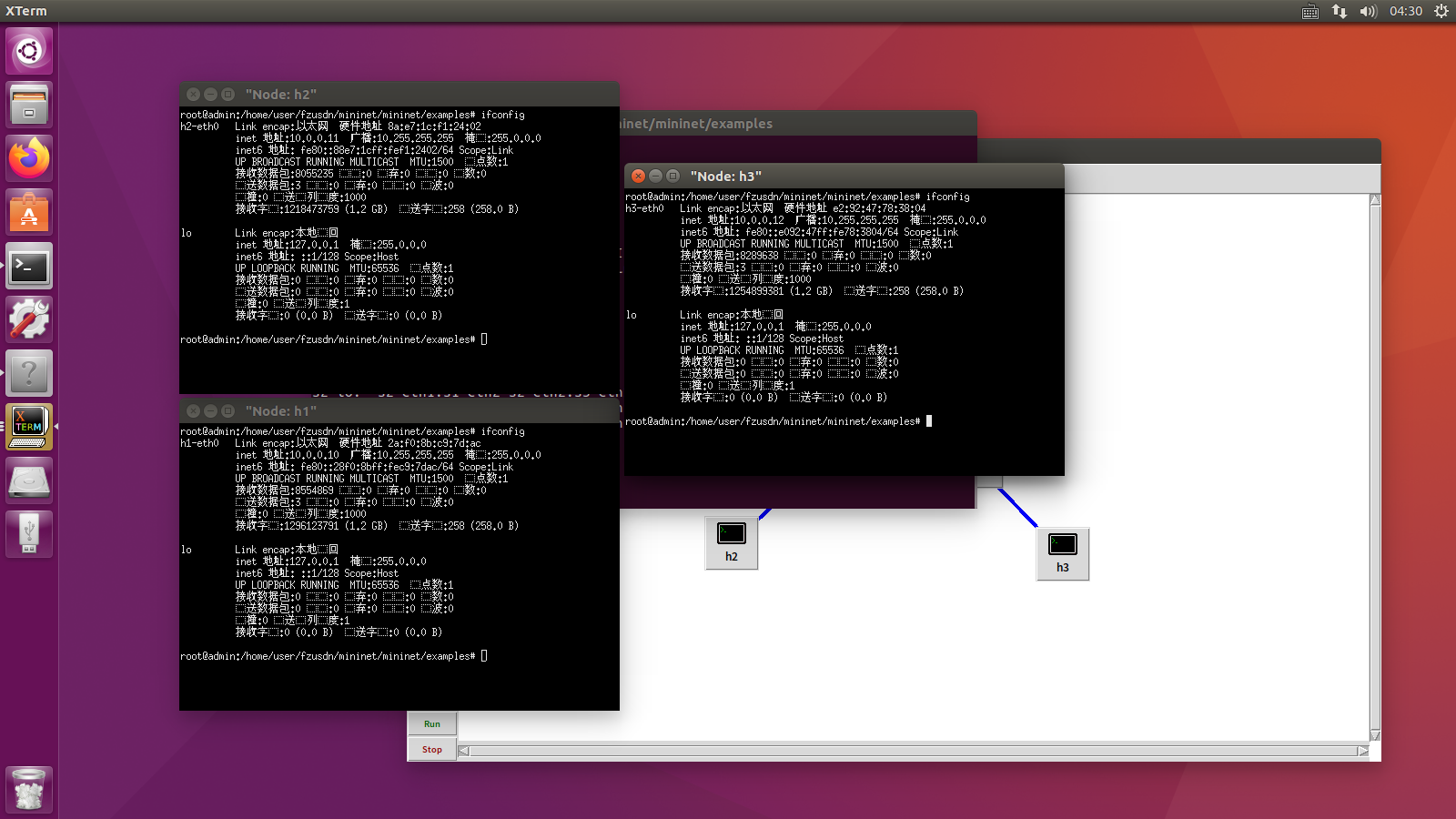2019 SDN上机第1次作业
1. 安装轻量级网络仿真工具Mininet
- 推荐github上的Mininet源安装
- 为了节约课程时间,实验室机房PC已经安装了Mininet,请大家在课后在自己的Ubuntu系统或虚拟机中尝试安装,并记录安装步骤。
安装步骤如下:
(这里使用的是GitHub安装)
首先需要虚拟机上已经安装好git,
2. 用字符命令搭建如下拓扑,要求写出命令
sudo mn --topo linear,3
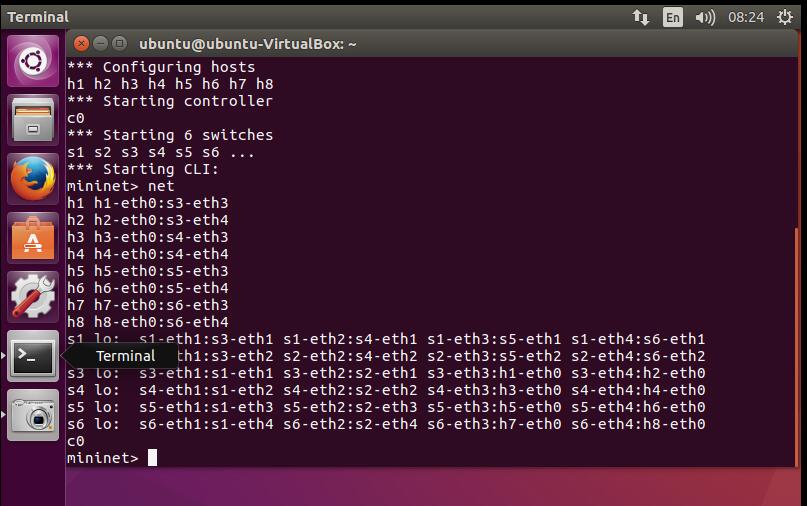
sudo mn --topo tree,fanout=3,depth=2
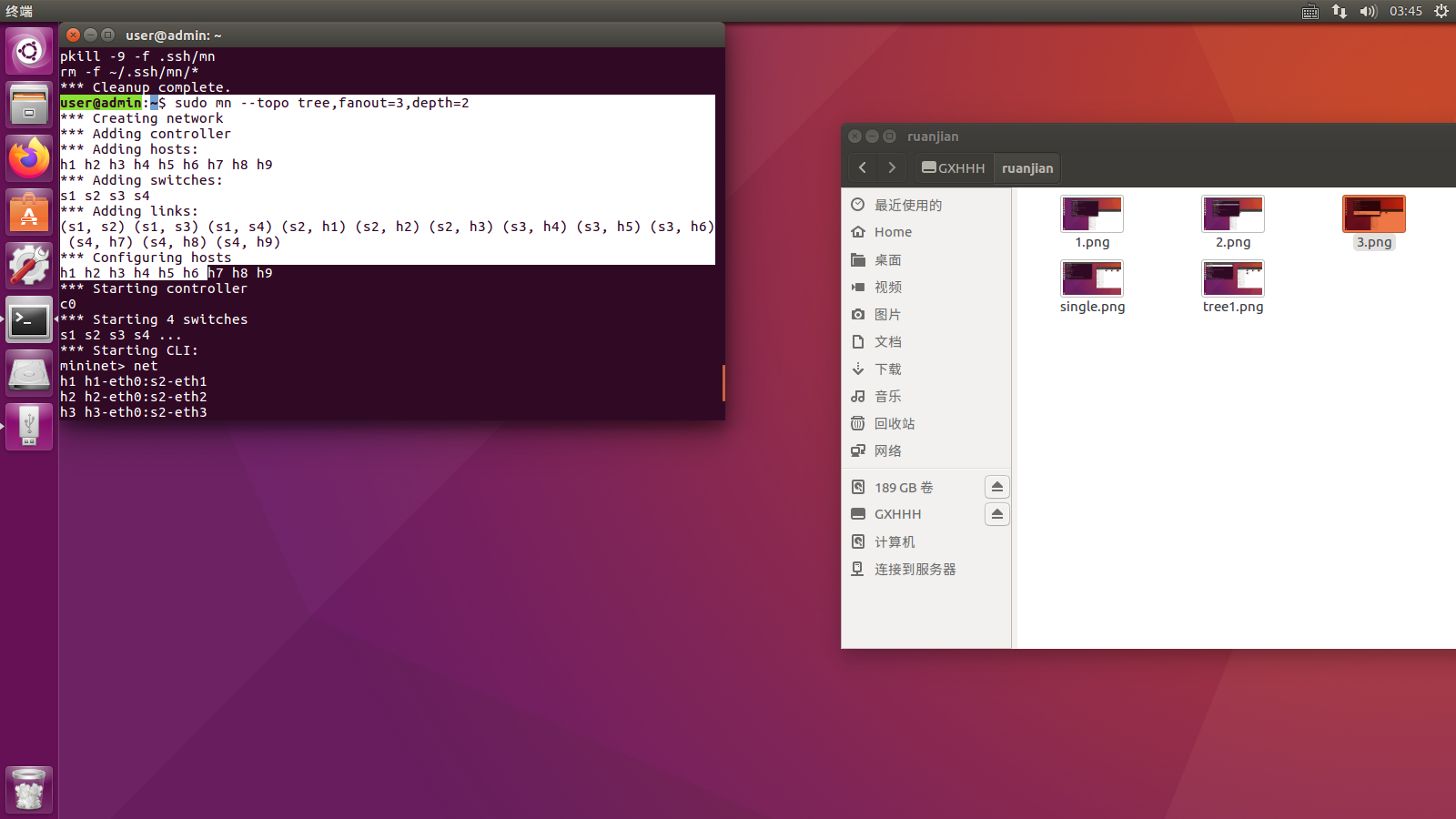
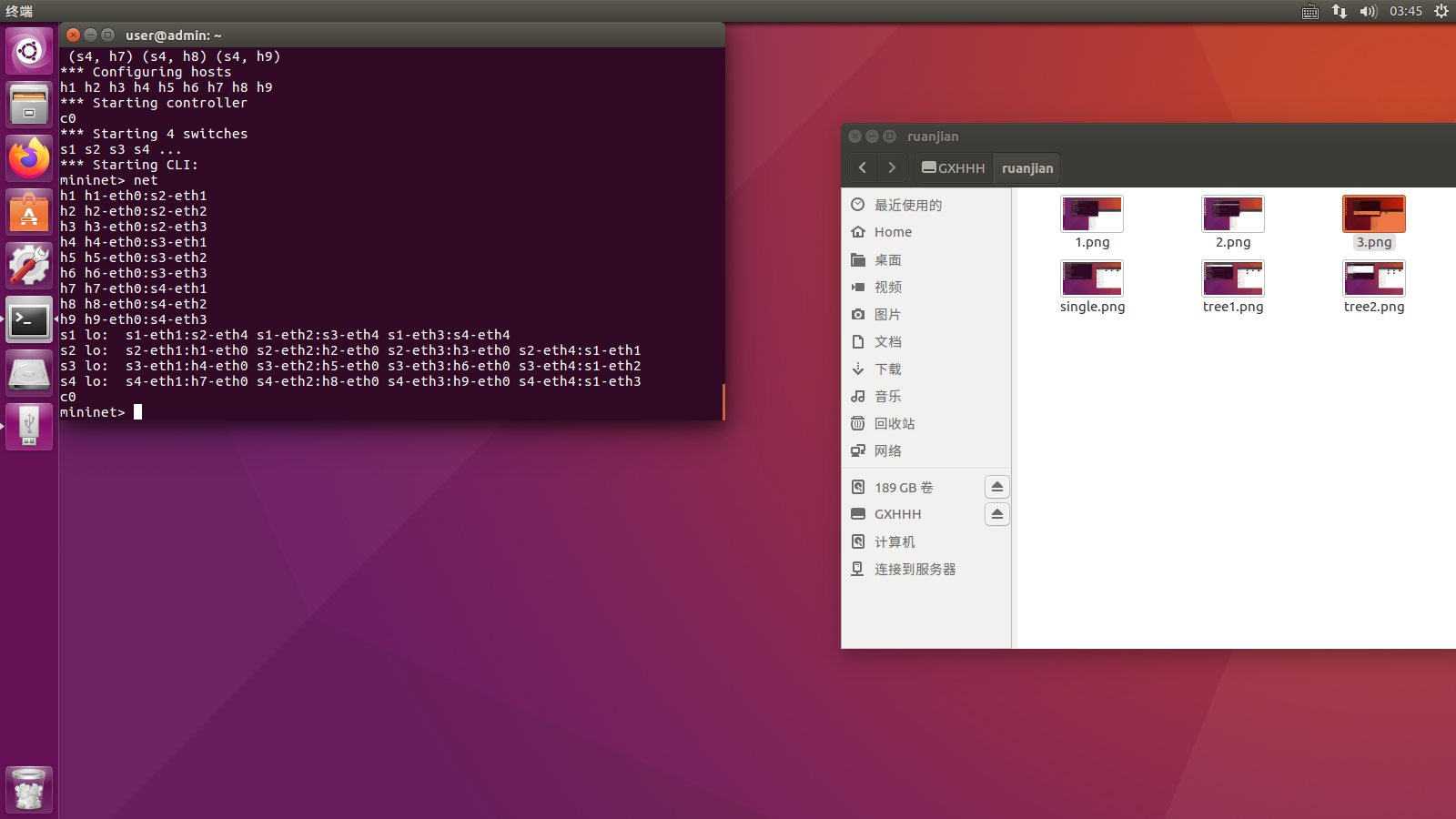
3. 利用可视化工具搭建如下拓扑,并要求支持OpenFlow 1.0 1.1 1.2 1.3,设置h1(10.0.0.10)、h2(10.0.0.11)、h3(10.0.0.12),拓扑搭建完成后使用命令验证主机ip,查看拓扑端口连接情况。
可视化图形界面

支持OpenFlow 1.0 1.1 1.2 1.3,设置h1(10.0.0.10)、h2(10.0.0.11)、h3(10.0.0.12)


单击run运行结果

使用net命令查看拓扑

使用xterm命令验证主机ip,查看拓扑端口连接情况
xterm h1 h2 h3

4. 利用Python脚本完成如下图所示的一个Fat-tree型的拓扑(交换机和主机名需与图中一致,即s1~s6,h1~h8,并且链路正确,请给出Mininet相关截图)
代码:
#!/usr/bin/python
#创建网络拓扑
"""Custom topology example
Adding the 'topos' dict with a key/value pair to generate our newly defined
topology enables one to pass in '--topo=mytopo' from the command line.
"""
from mininet.topo import Topo
from mininet.net import Mininet
from mininet.node import RemoteController,CPULimitedHost
from mininet.link import TCLink
from mininet.util import dumpNodeConnections
class MyTopo( Topo ):
"Simple topology example."
def __init__( self ):
"Create custom topo."
# Initialize topology
Topo.__init__( self )
L1 = 2
L2 = L1 * 2
L3 = L2
c = []
a = []
e = []
# add core ovs
for i in range( L1 ):
sw = self.addSwitch( 's{}'.format( i + 1 ) )
c.append( sw )
# add aggregation ovs
for i in range( L2 ):
sw = self.addSwitch( 's{}'.format( L1 + i + 1 ) )
a.append( sw )
# add links between core and aggregation ovs
for i in range( L1 ):
sw1 = c[i]
for sw2 in a[i/2::L1/2]:
# self.addLink(sw2, sw1, bw=10, delay='5ms', loss=10, max_queue_size=1000, use_htb=True)
self.addLink( sw2, sw1 )
```
```
#add hosts and its links with aggregation ovs
count = 1
for sw1 in a:
for i in range(2):
host = self.addHost( 'h{}'.format( count ) )
self.addLink( sw1, host )
count += 1
```
topos = { 'mytopo': ( lambda: MyTopo() ) }
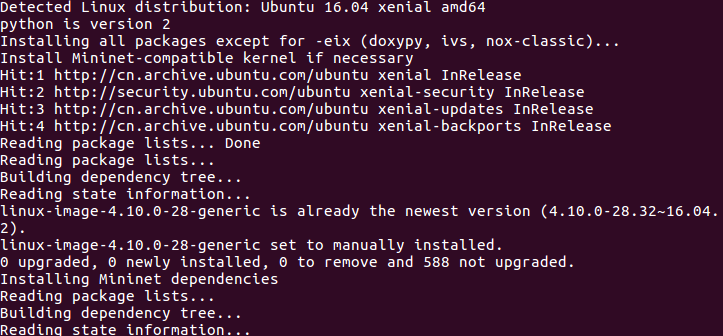
net命令查看拓扑
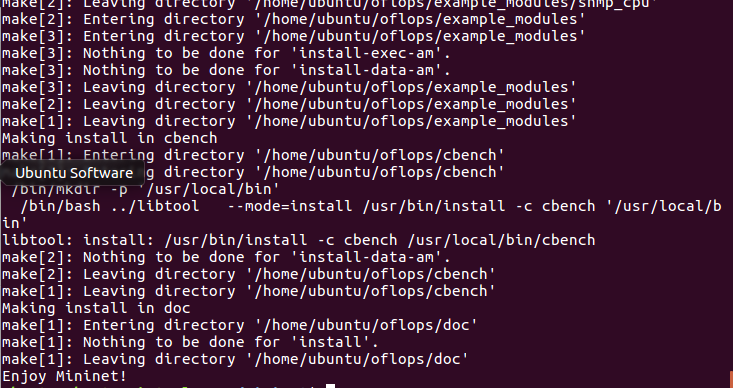
注意:每次要新建拓扑时,需执行以下命令,防止上次操作对本次实验的影响。
sudo mn -c
